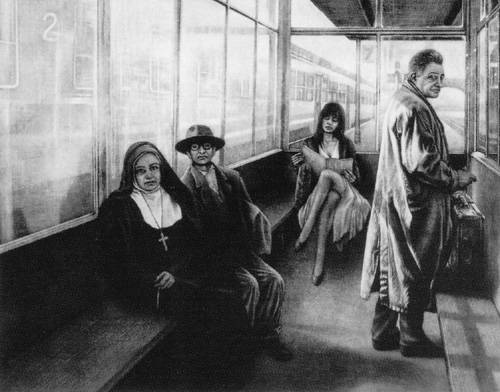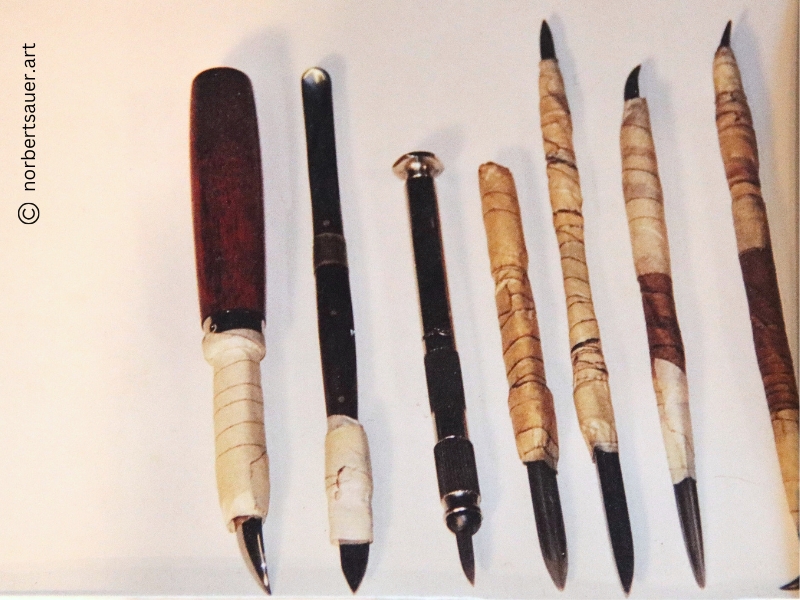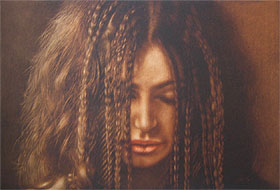Mezzotinto etching

Mezzotinto
Plattengröße 52 x 65 cm, Auflage 99
Mezzotint, also known as black art or maniere noir - the black method, is a printmaking technique developed by Ludwig von Siegen in 1642. This extremely complicated an labor-intensive process was used in english portrait painting of the 17th and 18th centuries to achieve a painterly effect. However becauce this technique is so labor-intensive, there are only a few artists who work with it. Norbert Sauer however, prefers this process to achieve a painterly effect in his graphic work.
Norbert Sauer about the technique of mezzotint etching:
Mezzotint engraving is also called paring technique. Since it is very complex and tedious, only a few artists still use this practise. But Norbert Sauer prefers this method, because no other technique results in such fantastic, picturesque graphics.
In swinging movements, the plate is roughened with a mezzotint knife. Mezzotint engraving is one part of the technique called copper intaglio.
A mezzotint knife is also called cradle iron. The lower side is shaped like a saw. There are rough, medium and refined cradle tools. The refined ones have up to a hundred teeth per one inch.
It is of absolute importance to handle the mezzotint knife evenly, with constant pressure. This is the most difficult thing. Only those who master this art will get equally roughed plates. If you would print this copper plate, the replica would be deep black.
A preparatory drawing is painted on the plate. Then the artist has to use polishing steel and a scraper: Those parts of the painting that should be brighter have to be polished. The brighter certain parts of the painting should be, the more the artist has to polish. With the mezzotint engraving, you have to work from dark to bright.
The finished copper plate is very sensitive and therefore, following the test print, it has to be sealed with a thin steel coating. That’s how it gets the silver look.
Mezzotinto engravings distinguish themselves by high quality and brilliancy.





